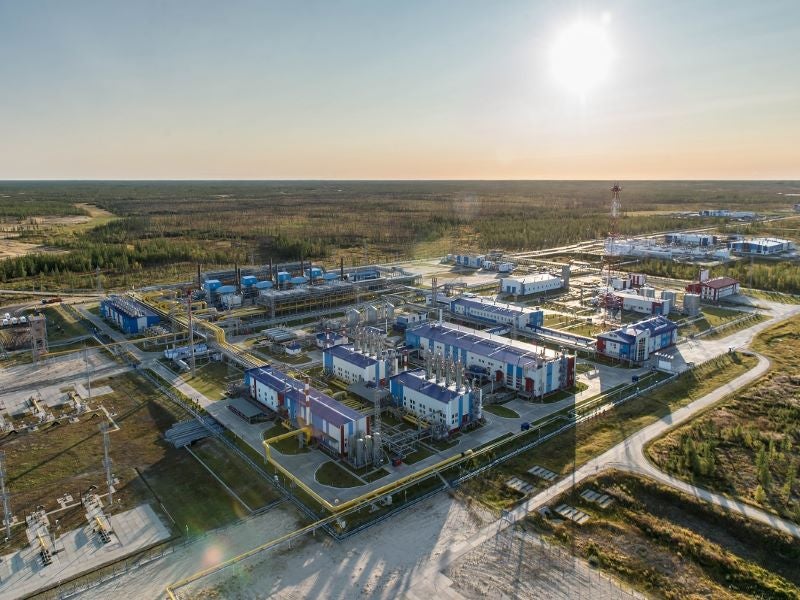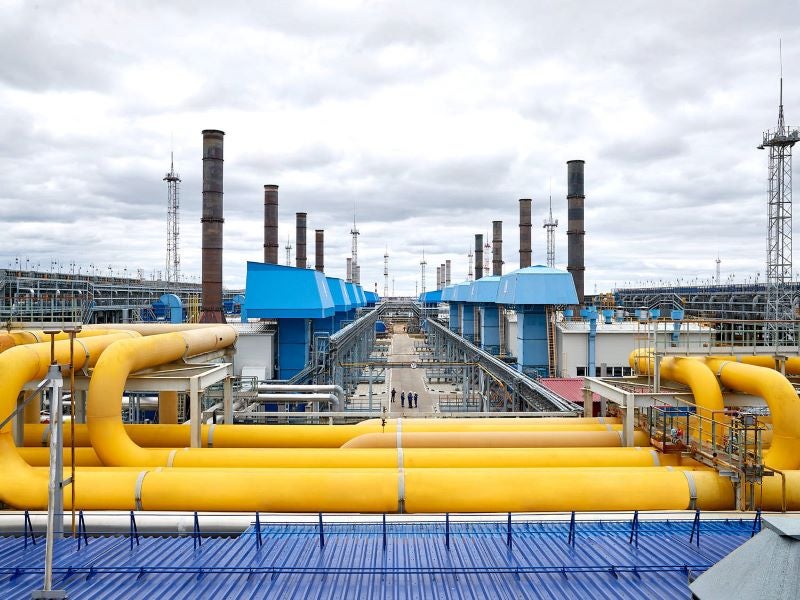The Yuzhno-Russkoye oil and gas condensate field, located in Western Siberia, is one of the biggest gas fields in Russia and has been producing since October 2007.
Severneftegazprom, a subsidiary of state-owned Gazprom, is the licence holder and operator of the giant onshore field. Gazprom and Wintershall Dea hold 40% and 35% stakes respectively in Severneftegazprom, while the remaining 25% is held by OMV, an oil and gas company based in Austria. OMV picked up 24.99% interest in Severneftegazprom from Uniper in November 2017.
The Yuzhno-Russkoye field produces oil, gas and condensate from the Cenomanian and Turonian sandstone formations. Severneftegazprom completed drilling 100 wells in the Turonian Formation in December 2021. The drilling campaign to extract resources from the Turonian Formation had started in October 2018.
Severneftegazprom produced 339.08 billion cubic metres (bcm) of natural gas from the field as of January 2022. The field’s gas output is supplied to the Nord Stream gas pipeline.
Location, discovery and reservoir details
The Yuzhno-Russkoye field is located in the Krasnoselkupsk district in Yamal-Nenets Autonomous Okrug, Western Siberia, Russia, 3,500km north-east of Moscow.
Discovered in November 1969, the field contains natural gas and condensate in Turonian, Cenomanian, Lower Cretaceous and Jurassic sandstone formations.
The field achieved the plateau production capacity of 25bcm of natural gas a year from the Cenomanian Formation in August 2009.
The field’s Turonian deposits, located 800m-850m beneath the surface, are considered to be hard-to-recover, because of complex geological formations, heterogeneous reservoir characteristics, and the low permeability of sedimentary rocks.
Severneftegazprom is also testing the sandstone formations in the Lower Cretaceous and Jurassic layers located at a depth of up to 4,000m. It drilled six exploration wells in both the layers in 2017, followed by the drilling of a new exploration well in the Jurassic layer in 2020.
Yuzhno-Russkoye field infrastructure
Infrastructure facilities at the Yuzhno-Russkoye field include a switch valve station, a gas treatment unit, recuperative heat exchangers, a booster compressor station, a gas dehydration station, a gas detection station, a warehouse to store chemicals and methanol, and water treatment facilities.
The Cenomanian layer, which is developed with 138 wells, has been the main source of gas for the Yuzhno-Russkoye field, whereas the current field development is focused on the Turonian layer.
Turonian deposit development details
Severneftegazprom commenced pilot production from the Turonian deposits in 2011, whereas small-scale commercial production started from 12 wells spread across three clusters in 2019.
The next stage of the Turonian deposit development involved drilling 88 production wells spread across 32 clusters, of which 44 production wells were drilled in 2020 and the remaining in 2021.
The cumulative gas production from the Turonian deposits of the Yuzhno-Russkoye field reached 10.41bcm as of January 2022.
Gas production from the Turonian Formation is intended to maintain the field’s plateau production rate.
Contractors involved
RusGazBurenie was contracted by Severneftegazprom to drill the Turonian production wells of the Yuzhno-Russkoye field. The contractual scope included drilling 89 directional wells and 11 horizontal wells.





